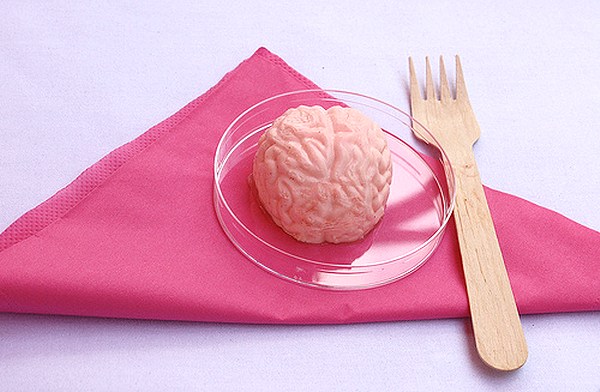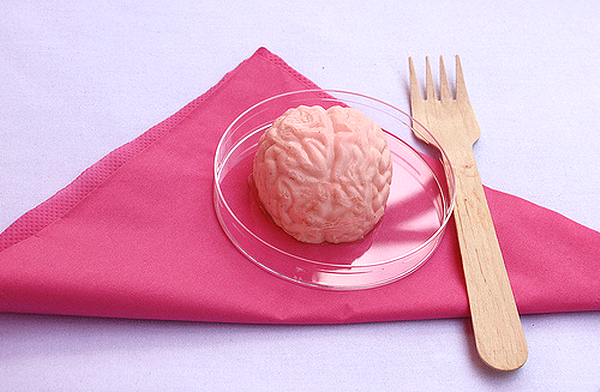Special Focus on Higher Education (Part I): Brain Bites are “now and then” updates regarding trends, statistics, and interesting info‑bites in personal economics. These tasty tidbits help maintain your edge over an unpredictable future. Think of them as cerebral snacks for the hungry mind!
Are too many going to college?
In 2013, a reported 115,520 janitors had a Bachelor’s degree or more.
Ref: Center for College Affordability and Productivity
To infinity… and beyond!
College tuition and fees have shot up by 538% between 1985 and 2013. During the same time, medical costs have increased by 286% and the Consumer Price Index has gone up by 121%.
Ref: Bloomberg
Waning confidence
The annual return on investment of a college degree has remained at about 15% for the past four decades. It’s not that college is a bad deal—it’s that we take on debt to pay for it. The number saying college is still a good financial investment has dropped from 81% in 2008 to 50% in 2013.
Ref: Fortune
Tapped out in Tulsa
In a 2013 survey, 37% of 103 higher-education leaders said they are “very concerned” about their ability to maintain current enrollment levels, up from 23% in 2012. The leaders said family finances were a growing challenge. 58% called it the top factor, compared with 49% the year before.
Ref: KPMG LLP
Losing altitude
In 20 years, tuition has shifted from being 23% of revenue at public universities to 50%. This is likely not sustainable.
Ref: American Assn. of Collegiate Registrars & Admissions Officers
Follow the money
In 2013, for-profit colleges enrolled about 13% of all students, absorbed 25% of federal loans and grants, and produced 47% of all student-loan defaults.
Ref: Center for Responsible Lending
Less moolah from the feds
Families in which both parents are unmarried and live together, or where the parents are in a same-sex marriage, may find they qualify for less financial aid. The 2014 FAFSA, which calculates income, assets, and family size, is gender and marital status neutral. In all cases, both partner’s income and assets must be reported, and all children are counted in household size.
Ref: Marketwatch
1 for you, 19 for McGraw-Hill
Between 2002 and 2013, the price of college textbooks rose 82%, nearly three times the rate of inflation. According to the College Board, the average student spends around $1,200 a year on books and supplies. 65% of students surveyed said they had decided against buying a textbook because it was too expensive and nearly half (48%) said the cost of books had an impact on how many or which classes they took.
Ref: U.S. PIRG
19 for you, 0 for McGraw-Hill
In 2014, the University of Maryland began a pilot program to transition all needed course material to open source electronic textbooks. Open source textbooks are not protected by copyright and therefore available to all who have an Internet connection.
Ref: Baltimore Sun
First in the nation
In a program called “Tennessee Promise,” the Volunteer State will pay tuition and fees at any community college in the state for all high school graduates, starting in 2015. The aim is to boost college graduation rates and build a more educated and skilled workforce in Tennessee.
Ref: Inside Higher Ed
Big changes in store
The SAT exam is getting a reboot in 2016. Out are mandatory essays, obscure vocabulary words, a deduction for wrong answers, and the 2400-point grading scale launched in 2005. In are questions that demand more analysis and a return to the 1600-point scale.
Ref: College Board
Cashing in
Harvard University’s “Pathways to Prosperity” (2014) reports that persons with a post-high school education will earn $1 million more over their lifetime than those with a high school diploma.
Ref: Harvard University
Debt zombies
In the 2012-2013 academic year graduate students accounted for about 1 in 6 student-loan recipients, but between 30% and 40% of debt extended by the federal government.
Ref: New America Foundation
Been there, done that
A simple one-hour intervention may help first generation college students improve their grades and avoid dropping out. Incoming students who listened to juniors and seniors discuss how their social class backgrounds affected their college experience subsequently earned higher grades and were more likely to use campus resources such as tutoring.
Ref: Psychological Science
An “A” just ain’t what it used to be
Researchers’ estimate Harvard’s average grade in 1950 was a C-plus. Today the median grade had soared to A-minus. The most commonly awarded grade is an A.
Ref: The Economist
Be very, very careful what you put into that head, because you will never, ever get it out.
~ Thomas Cardinal Woolsey, Roman Catholic Cardinal
The information in Brain Bites is sourced from a variety of usually reliable publications. Nevertheless, we cannot guarantee the accuracy or currency of this material and a degree of common sense should be applied before quoting it. If something appears to be too good to be true, it probably is.
Image credit: “Jelly Brain Dissection” by Guerilla Science (2010), licensed/modified (red ring removed) by permission of copyright holder.


